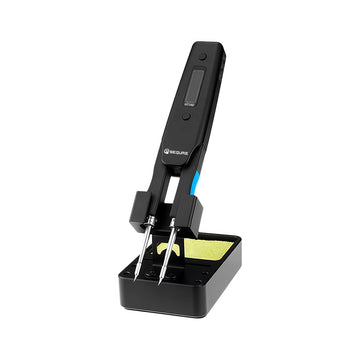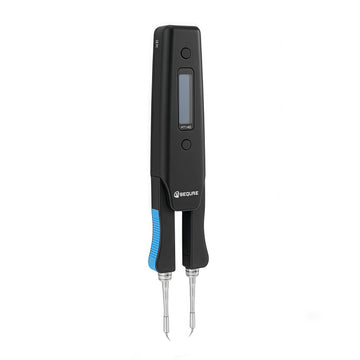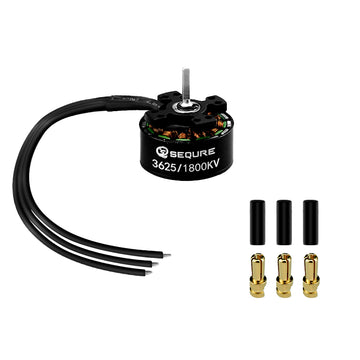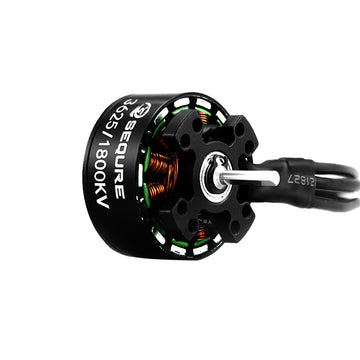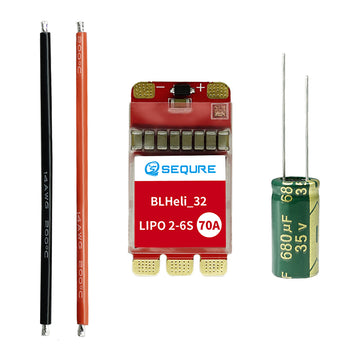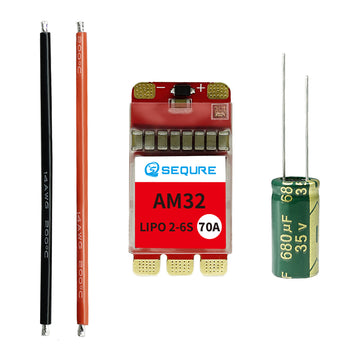How Much Do You Know About Spot Welder?
Spot Welding
The spot welding machine adopts the principle of double-sided double-point overcurrent welding. When working, the two electrodes pressurize the workpiece so that the two layers of metal form a certain contact resistance under the pressure of the two electrodes, and the welding current flows from one electrode to the other electrode When the two contact resistance points form an instantaneous thermal welding, and the welding current flows from the other electrode along the two workpieces to this electrode to form a loop, and will not damage the internal structure of the welded workpiece.
Introduction
Spot welding machines are classified according to their purpose, including universal (universal) and special; according to the number of solder joints to be welded at the same time, there are single-point, double-point, and multi-point; according to the conductive method, there are single-sided, Bilateral; According to the transmission mode of the pressurizing mechanism, there are pedal type, electric motor-cam type, pneumatic type, hydraulic type, compound type (pneumatic and hydraulic combined type); according to the characteristics of operation, there are non-automatic and automatic; according to The installation method is divided into fixed, mobile or portable (suspended); according to the moving direction of the movable electrode of the welding machine (usually the upper electrode), there are vertical stroke (electrode moves in a straight line) and arc stroke; According to the power supply mode, there are industrial frequency welding machines (using 50 Hz AC power), pulse welding machines (DC pulse welding machines, energy storage welding machines, etc.), and frequency conversion welding machines (such as low frequency welding machines).
When the workpiece and the electrode are fixed, the resistance of the workpiece depends on its resistivity. Therefore, the resistivity is an important property of the material to be welded. Metals with high resistivity have poor conductivity (such as stainless steel). Metals with low resistivity have good conductivity. (Such as aluminum alloy). Therefore, spot welding of stainless steel is easy to produce heat but difficult to dissipate, and spot welding of aluminum alloy is difficult to produce heat but easy to dissipate. When spot welding, the former can use a small current (several thousand amperes), while the latter must use a large current (several thousand amperes). Ten thousand amps). The electrical resistivity not only depends on the type of metal, but also on the heat treatment state, processing method and temperature of the metal.
In order to ensure the size of the nugget and the strength of the solder joint, the welding time and the welding current can complement each other within a certain range. In order to obtain a certain strength of solder joints, high current and short time (strong condition, also called hard specification) can be used, and small current and long time (weak condition, also called soft specification) can also be used. Whether to choose a hard specification or a soft specification depends on the properties and thickness of the metal and the power of the welding machine used. There are upper and lower limits for the current and time required for metals with different properties and thicknesses, which shall prevail when used.
The electrode pressure has a significant effect on the total resistance R between the two electrodes. As the electrode pressure increases, R decreases significantly, but the increase in welding current is not large, and it cannot affect the decrease in heat generation caused by the decrease in R. Therefore, the strength of the solder joint always decreases as the welding pressure increases. The solution is to increase the welding current while increasing the welding pressure.
Classification
Spot welding machines can be divided into universal (universal, special) spot welding machines according to their purpose;

Working Principle
The process of spot welding is to open the cooling water; clean the surface of the weldment, and after the assembly is accurate, send it between the upper and lower electrodes, apply pressure to make it contact well; electrify the contact surface of the two workpieces to heat and locally melt, forming Nugget: Keep the pressure after the power is off, so that the nugget is cooled and solidified under pressure to form a solder joint; the pressure is removed and the workpiece is taken out. Spot welding process parameters such as welding current, electrode pressure, energizing time and electrode working surface size have a significant impact on welding quality.
The spot welder uses the high temperature arc generated when the positive and negative poles are instantaneously short-circuited to melt the welded material between the electrodes to achieve the purpose of combining them. The structure of the spot welding machine is very simple. To put it bluntly, it is a high-power transformer that converts 220V AC into a low-voltage, high-current power supply, which can be DC or AC. Welding transformers have their own characteristics, that is, they have a sharp drop in voltage.
After the electrode is ignited, the voltage drops, and the working voltage of the electric welding machine is adjusted. In addition to the primary 220/380 voltage conversion, the secondary coil also has a tapped voltage, and there is also an adjustable iron core that is adjusted by an iron core. Electric welding machine is generally a high-power transformer, which is made by the principle of inductance. The inductance will produce huge voltage changes when it is switched on and off, and the high-voltage arc generated by the instantaneous short-circuit of the positive and negative poles is used to melt the solder on the electrode. To achieve the purpose of combining them.
Spot welding is a resistance welding method in which the weldment is assembled to connect the joint and pressed between two electrodes, and the base metal is melted by resistance heat to form a welding spot. Spot welding is often used for the connection of thin plates, such as aircraft skins, aeroengine smoke pipes, and automobile cab shells. The welding transformer of the spot welding machine is a spot welding electrical appliance, and its secondary has only one loop. The upper and lower electrodes and the electrode arm are used to conduct welding current and transmit power. Cooling water passes through transformers, electrodes and other parts to avoid heat generation. When welding, you should pass cooling water first, and then turn on the power switch. The quality of the electrode directly affects the welding process, welding quality and productivity. Electrode materials are commonly made of copper, cadmium bronze, chromium bronze, etc.; the shape of the electrode is various, mainly determined by the shape of the weldment. When installing the electrodes, pay attention to keeping the upper and lower electrode surfaces parallel; the electrode planes should be kept clean, usually with emery cloth or files. The welding cycle of spot welding and projection welding consists of four basic stages (spot welding process):
(1) Pre-compression stage-the electrode drops to the current-on stage, to ensure that the electrode is pressed against the workpiece, so that there is proper pressure between the workpieces.
(2) Welding time-the welding current passes through the workpiece and generates heat to form a nugget.
(3) Maintenance time-cut off the welding current, the electrode pressure continues to maintain until the nugget solidifies to sufficient strength.
(4) Rest time-the electrode starts to be lifted until the electrode starts to fall again, starting the next welding cycle.
In order to improve the performance of welded joints, it is sometimes necessary to add one or more of the following items to the basic cycle:
(1) Increase the pre-pressure to eliminate the gap between thick workpieces and make them fit closely.
(2) Use the preheating pulse to improve the plasticity of the metal to make the workpiece easy to fit tightly and prevent spatter; doing so during projection welding can make the multiple bumps evenly contact the plate before energized welding to ensure the uniform heating of each point.

How to use spot welding machine:
1. Adjust the position of the electrode rod before welding, so that when the electrode is just pressed onto the weldment, the electrode arms are kept parallel to each other.2. The number of current adjustment switch stages can be selected according to the thickness and material of the weldment. After power on, the power indicator should be on, and the electrode pressure can be obtained by adjusting the spring pressure nut and changing its compression degree.
3. After finishing the above adjustment, you can turn on the cooling water first and then turn on the power to prepare for welding. The procedure of the welding process: the weldment is placed between the two electrodes, the foot pedal is stepped on, and the upper electrode is in contact with the weldment and pressurized. When the foot pedal continues to be pressed, the power contact switch is turned on, and the transformer starts to work. The circuit is energized to heat the weldment. When the foot pedal is released after welding for a certain period of time, the electrode rises, and the power is cut off by the tension of the spring and then restored to its original state. The single-point welding process ends.
4. Weldment preparation and assembly: All dirt, oil stains, oxide scale and rust must be removed before welding of steel weldments. For hot-rolled steel, it is better to pickling, sandblasting or removing oxide scale from the welded parts first. Although the uncleaned weldment can be spot welded, it seriously reduces the service life of the electrode and reduces the production efficiency and quality of spot welding. For medium and low carbon steels with thin coatings, welding can be done directly.
In addition, users can refer to the following process data when using:
1. Welding time: When welding medium and low carbon steels, this welder can use strong standard welding method (instantaneous energization) or weak standard welding method (long-term energization). Strong standard welding method should be used in mass production, which can improve production efficiency, reduce power consumption and reduce workpiece deformation.
2. Welding current: The welding current is determined by the size, thickness and contact surface of the weldment. Generally, the higher the metal conductivity, the greater the electrode pressure, and the shorter the welding time should be. The current density required at this time also increases.
3. Electrode pressure: The purpose of the electrode applying pressure to the weldment is to reduce the contact resistance at the solder joint and to ensure the pressure required when the solder joint is formed
According to the number of solder joints welded at the same time, it is divided into: single-point, double-point, and multi-point;
According to the conduction mode, it is divided into: single-sided and double-sided;
According to the transmission mode of the pressurizing mechanism, it is divided into: pedal type, motor-cam type, pneumatic type, hydraulic type, compound type (pneumatic and hydraulic combined type);
According to the characteristics of operation, it is divided into: non-automated and automated;
According to the installation method, it is divided into: fixed, mobile or portable (suspended) spot welding machine;
According to the moving direction of the movable electrode (usually the upper electrode) of the welder, it is divided into: vertical stroke (electrode moves in a straight line), arc stroke
Spot welding machine application fields:
1. Multi-layer positive and negative electrode welding of power battery, and welding of nickel mesh and nickel sheet of nickel-hydrogen battery;
2. Lithium battery and polymer battery copper foil and nickel sheet welding, aluminum foil and aluminum sheet welding, aluminum sheet and nickel sheet welding;
3. Automobile wiring harness, wire head forming, wire mutual welding, multiple wires mutual welding to form a knot, copper and aluminum wire conversion;
4. Welding of wires, cables and famous electronic components, contacts, connectors, and terminals;
5. Roll welding of solar cells, flat solar heat-absorbing panels, aluminum-plastic composite pipes, and splicing of copper and aluminum plates;
6. Welding of high-current contacts, contacts, and dissimilar metal sheets such as electromagnetic switches and non-fuse switches.
Suitable for instant welding of copper, aluminum, tin, nickel, gold, silver, molybdenum, stainless steel and other non-ferrous metal materials such as thin plates, thin rods, wires, sheets, belts and other materials, the total thickness can reach 2-4mm; widely used in automobiles Decoration, electronics, electrical appliances, motors, refrigeration equipment, hardware products, batteries, solar energy, transportation equipment, toys and other industries.
If you want to buy spot welder, please click on spot welder
Dear Customer/DIYer
Thank you very much for your support and hope you have a happy and interesting shopping experience. We are very welcome to the majority of customers and friends to participate in our DIY interesting articles sharing activities.
Share & Cash Back
The number of words is more than 300 words, have exquisite picture in the article. Send us your article. After check your article and it pass through, we will cashback the amount of 5-8 dollars according to the quality of the articles.
Welcome to contact this email (info@sequremall.com) and send us the articles for checking.







